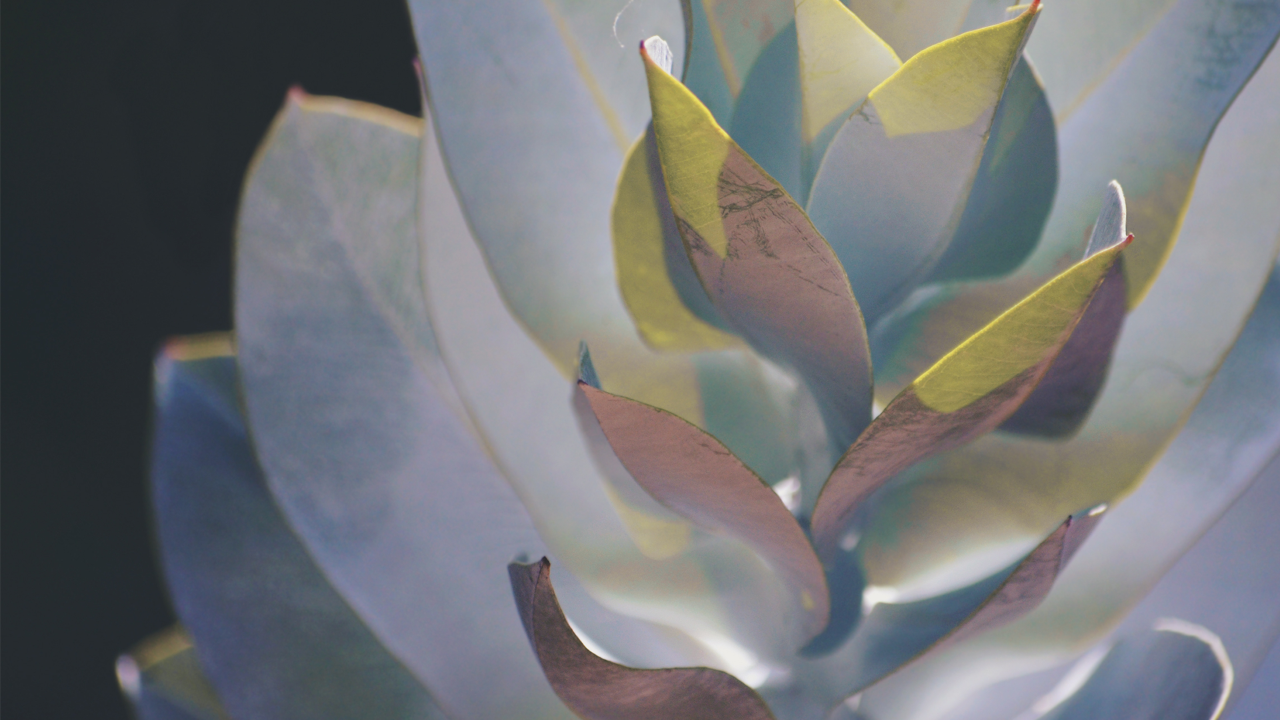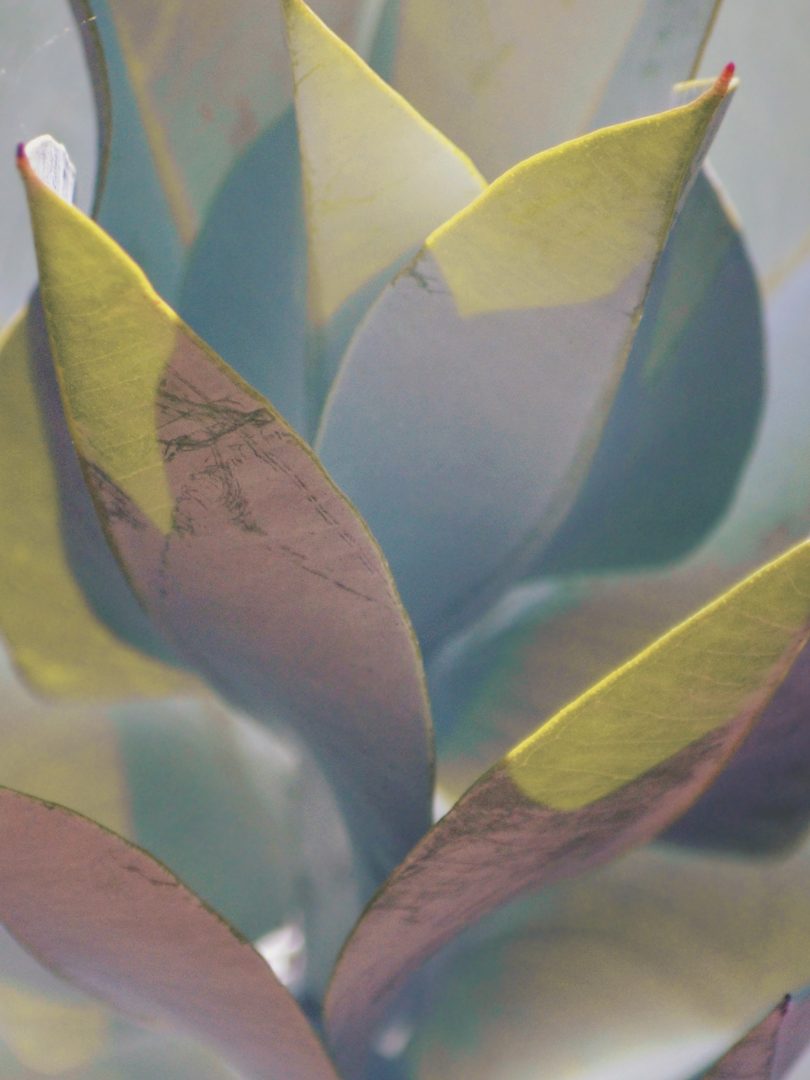

Macquarie Group Collection
Congratulations to the 2025 Macquarie Group Emerging Artist Prize winners and finalists.
Please note:
1. The payment for the art is directly between the buyer and the artist, with no involvement from Macquarie;
2. The artist's price for each work is GST inclusive, where appropriate;
3. Macquarie has not added commission to the artist's price; and
4. The costs for packing and/or transport are not included in the price, with arrangements to be mutually agreed between the buyer and seller.
Artist bio:
The title of this painting translates as ‘homelands’ and refers to the artist’s ancestral and spiritual relationship with the Nyiyampaa Wangaaypuwan People of the Cobar Peneplains in central southwestern NSW. The artist combines traditional and contemporary techniques, introducing light-cast shadows to evoke the cultural chasm that exists between two worlds of vastly different knowledges and experiences. Ballinger has undertaken a number of workshops with First Nations textile and fibre artists and is currently completing a Bachelor of Visual Art at the University of Southern Queensland.
digital art - Procreate app
59.4 x 42 cm
Artist bio:
Michael (Mickey) Wallace is a First Nations artist working across digital drawing and performance, based in Mparntwe (Alice Springs) and working with the Bindi studio. His digital work, infused with humour, features friends and familiar animals. This one is a self-portrait, evoking the universal bond between humans and dogs. In 2023, Mickey won the People’s Choice Award in the Central Desert Digital Art Prize and in 2024 his work was selected for the Mparntwe Street Art Festival.
Artist bio:
The work of Sydney-based weaver Blake Griffiths has been included in textile exhibitions since 2015, when he was undertaking a Bachelor of Design at UNSW. This image is based on an 1870s photograph of shearers and their partly shorn merino sheep. At the time, squatters were moving large flocks onto the Murray-Darling basin: the introduction of livestock caused irreversible environmental damage. Wool as a medium in this artwork becomes a metaphor for the conflicted and complicit histories of extractive agriculture in this country.
Artist bio:
Myarn Alden is a Kija, Jaru and Ngarti woman from the Kimberly region of Western Australia. Born in 2004, she is both a practicing artist and assistant at the APY Art Centre Collective in Adelaide, where she is completing her education. Alden learnt her Western Desert style of painting from her (Kumputu) great-grandmother, Biddy Timbinah, and now carries those stories in her own paintings, which seek to capture the changing rhythms of Country, its harshness and movement. An abiding theme in Alden’s work is the importance of protecting Country and its ancient, ongoing connection to her people.
Artist bio:
Bartok is a 2022 graduate of the National Art School in Sydney and has been exhibiting in artist-run and award exhibitions for almost a decade, since winning the Fisher’s Ghost Art Award for Painting in 2016. He infuses mixed media collage works with a black humour intended to mirror the darker aspects of our interactions with culture and society. This image expresses how our view of the world is increasingly mediated through digital screens, suggesting that virtual reality has collapsed into the lived landscape.
Artist bio:
Since graduating from Sydney College of the Arts in 2019, Sydney artist Mel Booth has regularly exhibited her multi-media work in artist-run spaces in Sydney and London. She uses materials and methods in non-traditional ways, exploring in this work the symbiotic connection and parallels between humans and the plant world. Hand crafted from mycelium and agricultural waste, the work belongs to an ongoing series originally exhibited in 2024 at Firstdraft.
Artist bio:
Sydney artist Sadhbha Cockburn creates artworks from found objects, spun and woven fibres, juxtaposing hard and soft materials in a form of visual poetry. This work was inspired by the artist’s recent residency at the The Foundations, an abandoned cement factory and quarry in the Central Tablelands of NSW on Wiradjuri land, where she conversed with older women at the local spinning club and learned about their early, harsh lives in the industrial town. Cockburn studied medicine before switching to art in 2018 and is currently a PhD candidate at UNSW Art & Design.
Artist bio:
Ngarrindjeri artist Tiarnie Edwards grew up on Nauo Country in Tulka, on the southern tip of the Eyre Peninsula in South Australia. Completing a Bachelor of Contemporary Art at the University of South Australia, the young artist’s final year work was selected for the annual Hatched exhibition at Perth Institute of Contemporary Art (PICA). Tiarnie started working with ceramics in 2022, utilising the medium to preserve histories of community and individuals through storytelling. This work recounts childhood memories of being chased by emus, while also conveying a cultural message about the importance of caring for Country.
Artist bio:
Having been awarded both undergraduate and postgradute degrees in printmaking from the National Art School, Sydney-based Wiradjuri artist Freyja Fristad explores in her prints feelings of grief associated with the loss of cultural identity. Representing absence as a void, she creates a moiré or shimmering effect across an otherwise empty field. Patterns and colours appear where none exist, as the viewer searches for something to materialise – a search without resolution yet alive with potential.
Artist bio:
A nocturnal vision of Enmore Park in Sydney’s inner-west, this image continues a series of works by Qiulin Li of urban parks at night. After hours, when daytime park users have gone, parks can become locations for nefarious or mischievous activity, such as the displacement of a shopping trolley to the top of a play structure. Qiulin Li has a Master of Art degree from UNSW Art & Design and has exhibited his work in artist-run spaces in Sydney and Canberra.
Nancye's old cotton sheet dyed with avocado skins/pits, wrapped around a star picket post for two months and shot with a Stoeger Coach 12 gauge shotgun by Booman, embroidery thread gifted by Helen, farm fencing wire and shotgun bullet casings
162 x 116 x 48.5 cm
Artist bio:
Nancye's old cotton sheet dyed with avocado skins/pits, wrapped around a star picket post for two months and shot with a Stoeger Coach 12-gauge shotgun by Booman, embroidery thread gifted by Helen, farm fencing wire and shotgun bullet casings.
This textile work by ANU graduate, Gilgandra-based artist Clementine Belle McIntosh is from a body of assemblage work recently shown at Western Plains Cultural Centre. It combines textiles with traditional painting techniques and nonhuman collaboration to capture dynamic interactions between environments, industries and communities in rural Australia. As the material description of the work reveals, it was conceived and created very site-specifically, becoming an extension of the place it encapsulates.
Artist bio:
Now based in Adelaide, Fiona Pompey is from Fregon on the APY Lands and works with the Kaltjiti Arts Centre. Her paintings depict the ridges and sandhills of the desert country: small rounded shapes reflect the habitat of shrubs, trees and bushes that grow on and around the sandhills. Fiona first exhibited her work at the Melbourne Art Fair in 2025 and she was recently also selected as a finalist in the Ravenswood Art Prize.
Artist bio:
Sydney-based artist Taylor Steel combines analogue and digital processes in experimental forms of printmaking based on an archive of photographs, both her own and found.
She finds inspiration in abandoned urban spaces where nature has returned, often in the form of weeds, creating new environments outside the planned city structures in which we live. This slippage from convention is mirrored in her process, which deliberately transforms and degrades the original images she draws upon.
Artist bio:
The topsy-turvy elements within this image refer to the impact of western civilisation on the natural world. Though whimsical in its use of magic realism, the subject matter, human-induced environmental crisis, couldn’t be more serious. Anna Weston is currently completing a Bachelor of Fine Arts (Honours) at the Queensland College of Art & Design, Griffith University. In 2024 she was a finalist in both the Alice Prize, NT, and Darling Portrait Prize, Canberra.